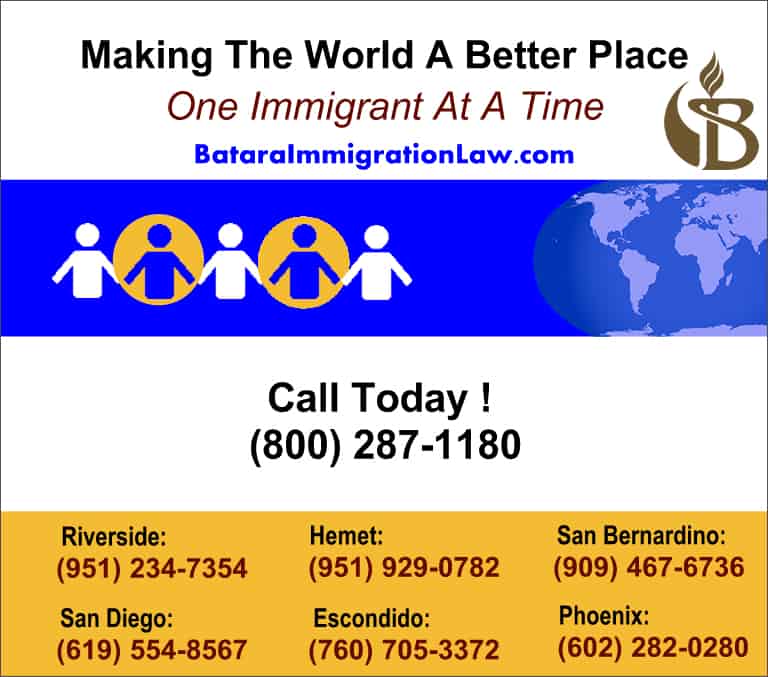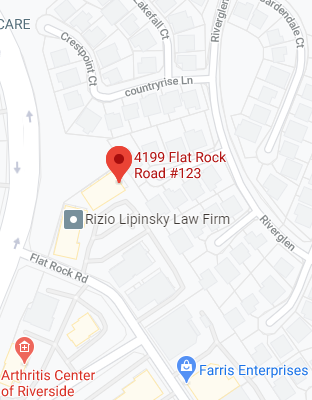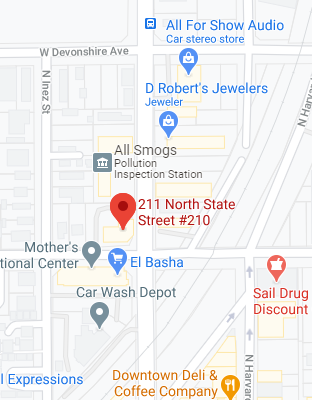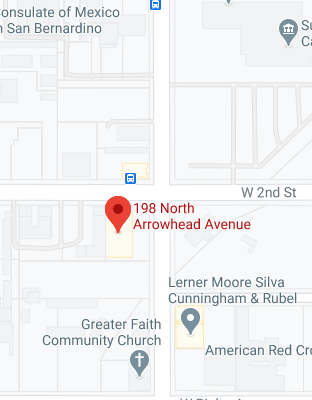Navigating the green card process is often a confusing journey, with unexpected twists and turns. When such moments occur, many immigrants feel confused, frustrated, and often afraid – afraid that their hopes of becoming a permanent resident are about to end.
For instance, nearly 30% of immigrants awaiting their green card interview dates, instead receive a Request For Evidence (RFE). Many times, their fear is heightened by a belief they have no additional documents to provide.
Yet, as I have learned in my green card attorney practice, immigrants often underestimate the evidence they have access to and fail to realize that a Request For Evidence does not have to lead to a green card denial.
In fact, an RFE is not the end of the road. It is an opportunity to strengthen your case and move closer to securing your green card.
Here is a three-step process that can help you put your best foot forward, and help you on journey to permanent residence success.
Step 1: Carefully Review And Study The USCIS Request For Evidence
Begin with reviewing the government’s request in detail. Identify the documentation that USCIS is seeking. This is critical to sending a response that helps bring you a step closer to permanent residence success.
Once you studied the RFE, carefully assess the evidence USCIS is requesting. You may not have exactly what USCIS mentions in their notice. However, you are not limited to their suggestions. If you have other types of information that answers their concerns, it is okay to submit such evidence.
Mark your calendar with the deadline. Typically, green card applicants are given 30 to 87 days to respond. To avoid any last minute problems, try to reply as soon as possible. This will help assure you have time to correct any glitches that might arise. Do not, do not, do not miss the deadline.
Step 2: Thoroughly Gather And Organize Your Supporting Evidence
In general, there are three common reasons that cause immigration authorities to seek more information from green card applicants.
Insufficient Information: You may have failed to send important documents to support your application. For example, USCIS may request information regarding financial details, such as tax returns, to ensure a sponsoring petitioner meets income requirements.
Proof of Eligibility: The evidence you submittied might not have shown that you qualify for a green card. Sometimes, the government may want evidence about an immigrant’s date or manner of entry into the United States. Other times, the agency is looking into issues like an immigrant’s residence history or whether the immigrant, who entered on a fiance visa, was properly married within 90 days.
Legal Issues: Other times, the inquiry is centered on a legal matter that USCIS wants to look at more closely. These types of inquiries may revolve around issues like the validity of prior marriages which had sparked suspicions of marriage sham. Or maybe the issue pertains to a past conviction officers want to evaluate whether it disqualifies an applicant from being granted green card status or requires them to seek a waiver.
Step 3: Submit A Comprehensive And Accurate Response To The RFE
With your documents prepared, the final step is to assemble them and submit your response to USCIS.
Follow the pointers listed below to ensure your submission is thorough, accurate, and maximize your chances for victory.
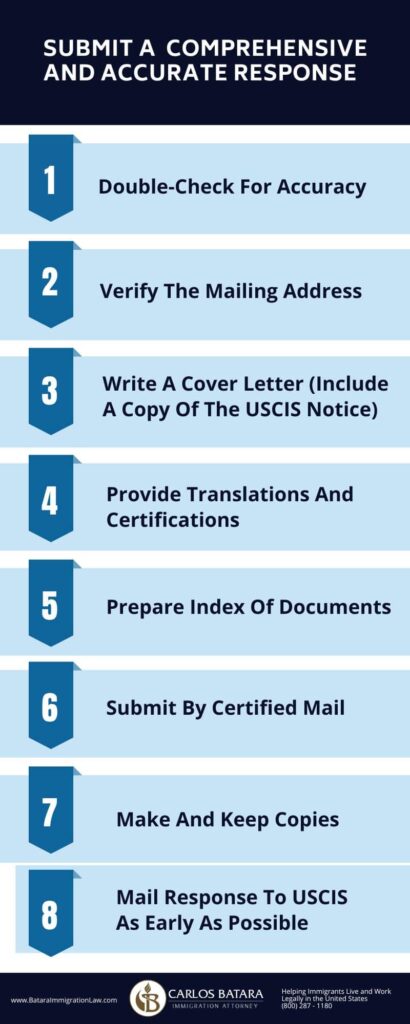
- Double-Check for Accuracy: Review all documents to avoid errors. Mistakes can lead to delays or negative outcomes. It is not the government’s duty to assess and correct your blunders.
- Verify The Mailing Address: Ensure that you send your response to the correct USCIS address listed in the RFE. If you mail to a wrong address, causing you to miss the deadline, guess what happens next? Do not expect USCIS to be sympathic to your plight.
- Prepare A Cover Letter (And Include A Copy Of the USCIS Request For Evidence Notice): Always include a copy of the RFE. This ensures USCIS officers will not go off course when analyzing the relevance of documents you submit in response to the RFE.
- Provide Translations and Certifications: These are common sense actions. The government will not hire an interpreter to explain the evidence you submit, Also, when submitting legal documents, do not overlook to send court or government certified copies of official documents. The government does not assume suthencity.
- Create An Index of Documents: An index helps the USCIS officer quickly review the various types of evidence you submit, thereby increasing the likelihood of a favorable outcome.
- Use Certified Mail When You Respond: Documents can go missing, even though they were seemingly sent properly. It may not happen often, but it happens enough that caution is warranted. To prevent such mishaps, send your response via certified mail with a tracking number.
- Make Copies: I have seen far too many immigrants who visit after they receive bad news from USCIS. When I ask to review copies of what they sent to the government, they have nothing. Do not allow yourself to be placed in such a vulnerable position, from which the odds of fighting back is greatly curtailed. Make an exact copy of your entire submission for your records, before responding.
- Respond Early: Aim to submit your response as soon as possible to allow time for any unexpected issues. This suggestion does not need further explanation
Conclusion
An RFE is not the end of the road—it is an opportunity to provide the evidence necessary to move your case forward.
By understanding the request, gathering and organizing the right materials, and submitting a complete and timely response, you can address the USCIS concerns effectively.
And a step closer to winning permanent residence.
Recommended Reading:
Ready to take a serious and honest look at the strengths and weaknesses of your immigration case? Let’s get started with a personalized strategy and planning session . . .
Here's How It Works
1
Call Our Office
Immigration law doesn’t have to be confusing. You don’t have to live in fear of being deported and separated from your family. A comprehensive 30-minute Strategy And Planning Session will take the stress out of not knowing your options first-hand.
2
Meet With Carlos
Every case is unique. We refuse to take cookie-cutter approaches to your case. After we discuss the ins and outs of your immigration and family situation, Carlos will outline your chances for success and how to overcome obstacles standing in your way.
3
No Pressure - No False
Promises
Hiring a lawyer is a big investment, and we will not pressure you to hire us or push you into a plan you don’t understand. If we cannot help you, we will tell you. We will not take your case, unless we believe we can make a difference for you and your family.
